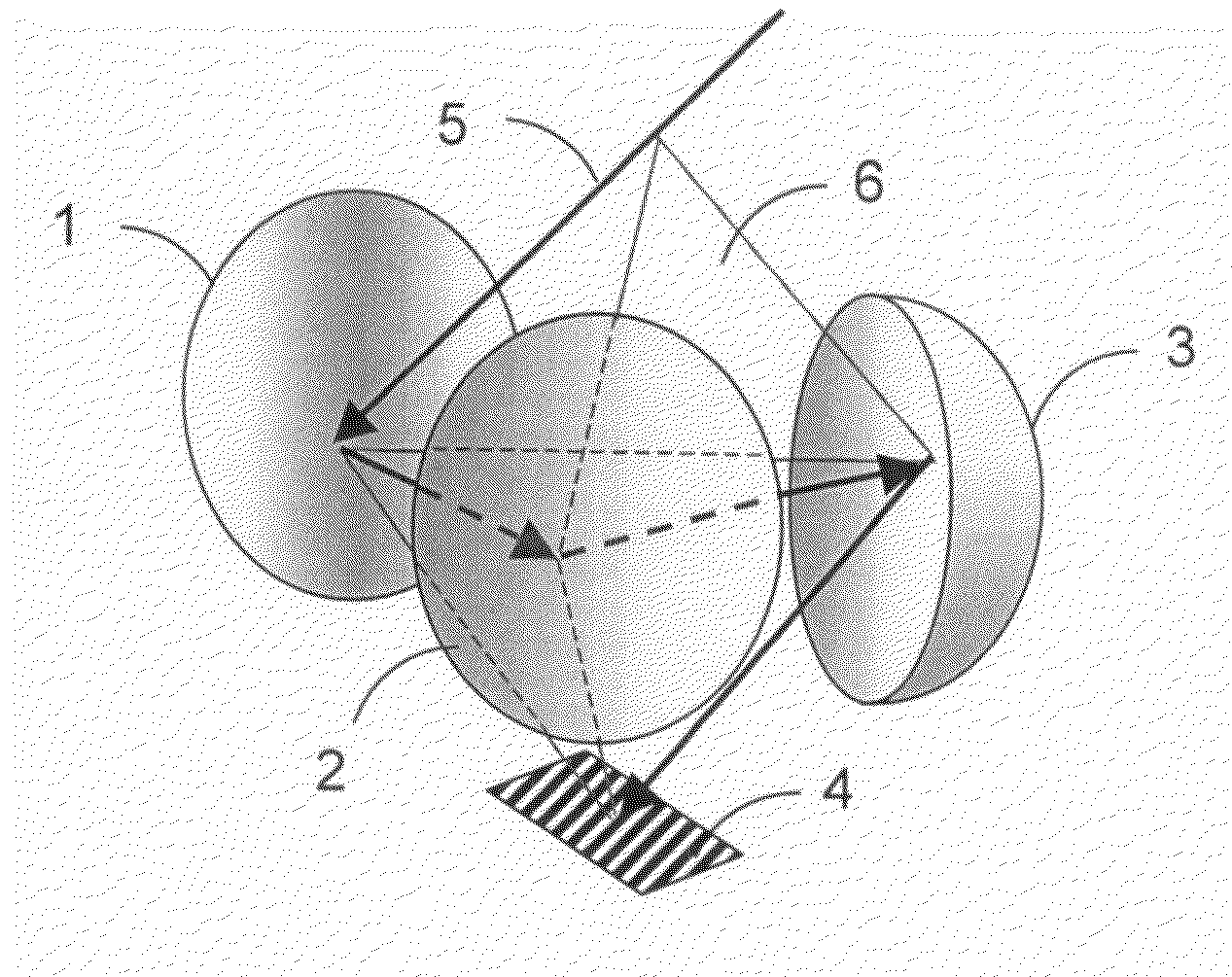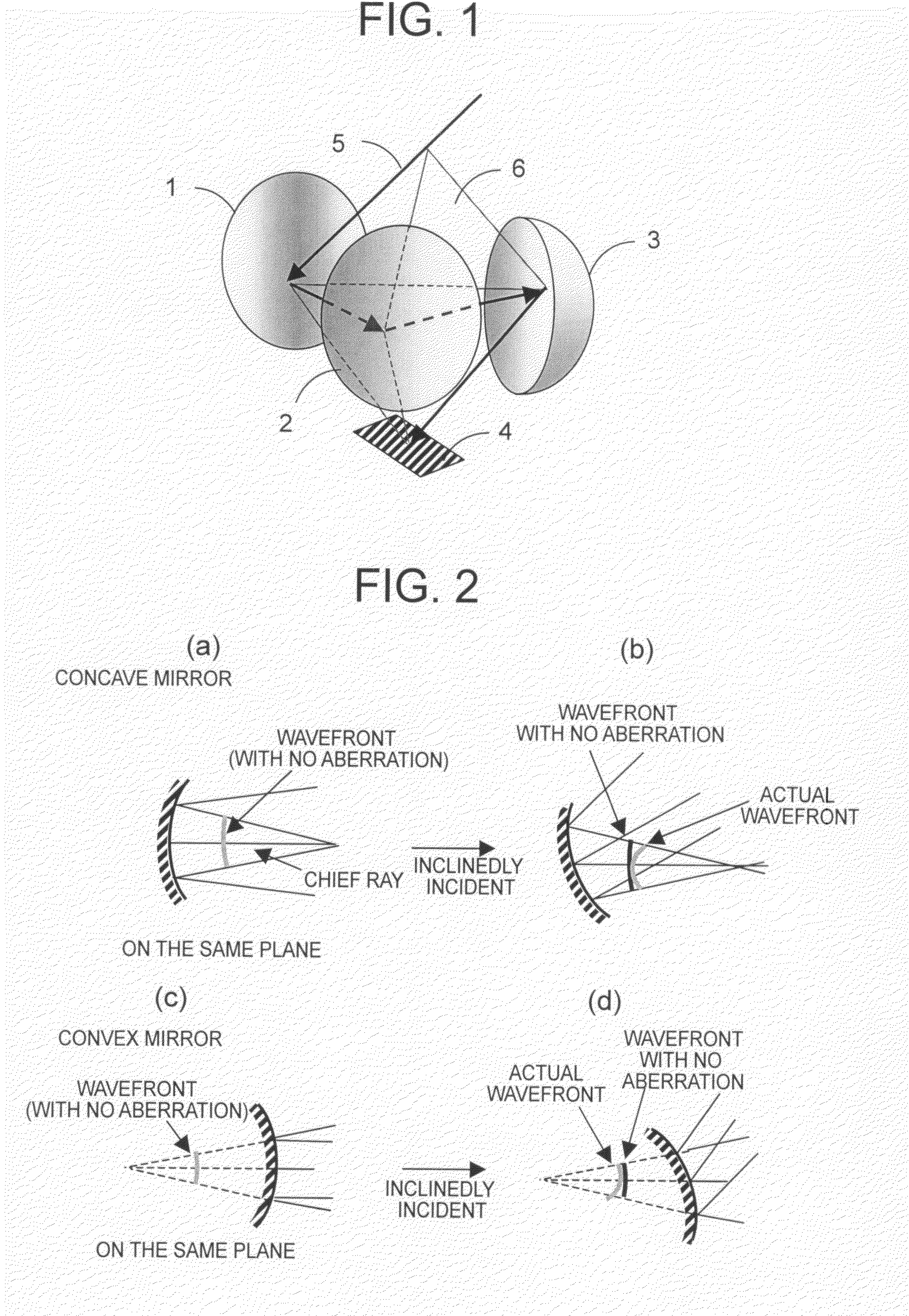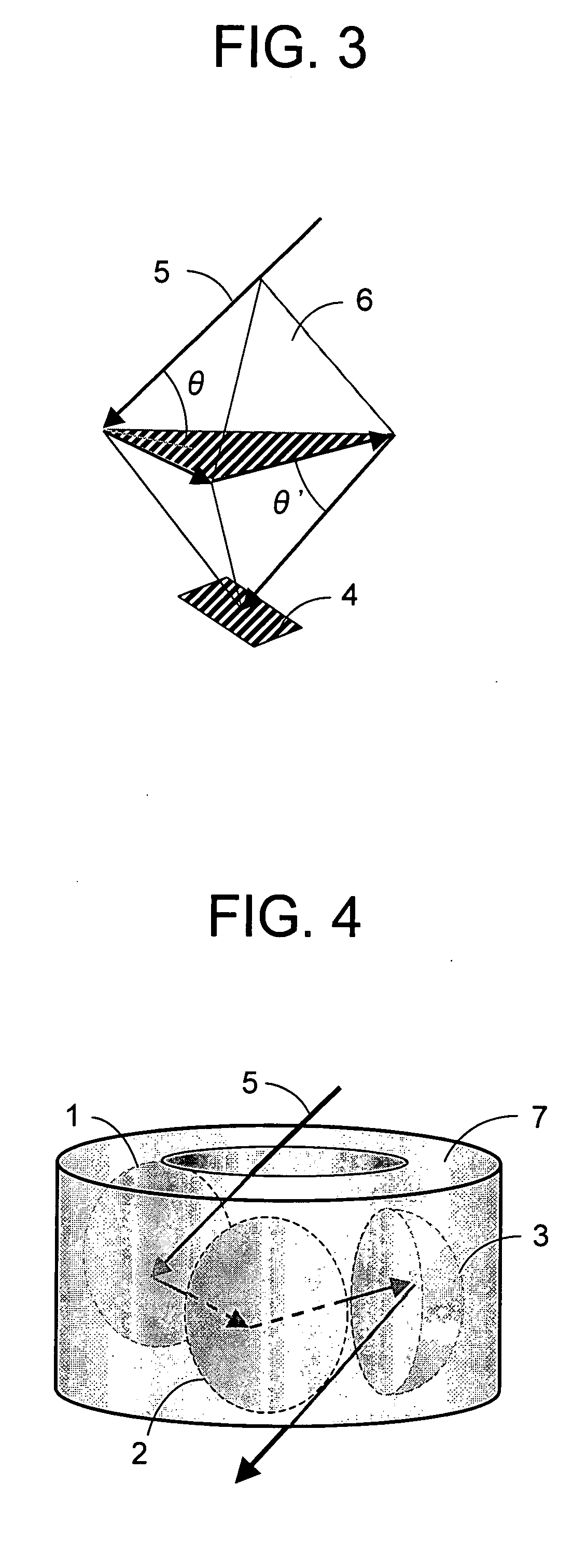Imaging Optical System
- Summary
- Abstract
- Description
- Claims
- Application Information
AI Technical Summary
Benefits of technology
Problems solved by technology
Method used
Image
Examples
first embodiment
[0031]FIG. 1 is a schematic diagram showing an imaging optical system according to a first embodiment of the present invention. As shown in FIG. 1, light beams propagated from a subject are first incident to a first reflector 1 in the optical system and the light beams reflected by the first reflector 1 are next incident to a second reflector 2. The light beams reflected by the second reflector 2 are then incident to a third reflector 3 and the light beams reflected by the third reflector 3 form an image of the subject on an image plane 4. Note that reference numeral 5 denotes an optical path of a central chief ray indicating a chief ray of the light beams forming the image at the center of the image plane 4.
[0032]The first embodiment is set so that five points, i.e., an appropriate point on the central chief ray 5 incident to the first reflector 1, reflection points of the central chief ray 5 on the first reflector 1, the second reflector 2, and the third reflector 3, and an image ...
second embodiment
[0054]FIG. 4 is a schematic diagram showing an imaging optical system according to a second embodiment of the present invention. In FIG. 4, each portion that is the same as or the equivalent to a portion of the imaging optical system of the first embodiment shown in FIG. 1 is given the same reference numeral and a description, thereof will be omitted. New reference numeral 7 denotes an image formation member that is an integral component including structures of the first reflector 1, the second reflector 2, and the third reflector 3.
[0055]In the second embodiment, it is possible to design a compact optical system while suppressing blurring of an image by using the first reflector 1, the second reflector 2, and the third reflector 3 as in the first embodiment. In addition, in the second embodiment, all reflectors are integrated into the image formation member 7, so it is not necessary to align each reflector at the time of working, and work such as attachment and adjustment is unnece...
third embodiment
[0064]FIG. 5 is a schematic diagram showing an imaging optical system according to a third embodiment of the present invention. In FIG. 5, each portion that is the same as or the equivalent to a portion of the imaging optical system of the first embodiment shown in FIG. 1 is given the same reference numeral and a description thereof will be omitted. New reference numeral 8 denotes a relay lens that forms an image formed by the third reflector 3 on the image plane 4 again and new reference numeral 9 denotes a field diaphragm disposed at a position at which the image is formed by the third reflector 3.
[0065]In the third embodiment, the relay lens 8 and the field diaphragm 9 are provided, thereby making it possible to block stray light that is incident from the outside of a field of view, which makes it possible to obtain a high-contrast image. When light beams (stray light) other than light beams that are reflected by the first reflection surface 1, the second reflection surface 2, an...
PUM
 Login to View More
Login to View More Abstract
Description
Claims
Application Information
 Login to View More
Login to View More - R&D
- Intellectual Property
- Life Sciences
- Materials
- Tech Scout
- Unparalleled Data Quality
- Higher Quality Content
- 60% Fewer Hallucinations
Browse by: Latest US Patents, China's latest patents, Technical Efficacy Thesaurus, Application Domain, Technology Topic, Popular Technical Reports.
© 2025 PatSnap. All rights reserved.Legal|Privacy policy|Modern Slavery Act Transparency Statement|Sitemap|About US| Contact US: help@patsnap.com



